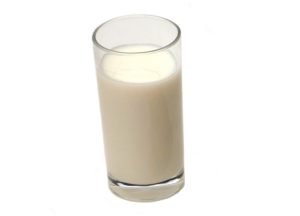Sheep’s milk is a popular dairy product in many parts of the world. Although cow’s milk is the most widely consumed, sheep’s milk has its own qualities and characteristics. Here are some key points about sheep’s milk:
1. Nutritional composition: sheep’s milk is rich in nutrients and is considered very nutritious. It contains higher amounts of fat, protein and lactose than cow’s milk. Sheep’s milk is also an excellent source of vitamins and minerals such as calcium, phosphorus, vitamin B12 and riboflavin.
2. Digestibility: Sheep’s milk has smaller fat globules and a higher proportion of short and medium chain fatty acids compared to cow’s milk. This composition makes it easier to digest for some people who may be lactose intolerant or have difficulty digesting cow’s milk.
3. Flavor and texture: Sheep’s milk has a characteristic flavor and aroma, which can be described as rich, creamy and slightly sweet. It is also known for its smooth, velvety texture. These qualities make it a popular choice for making a variety of dairy products, such as cheese, yogurt and butter.
4. Culinary uses: Sheep’s milk is used to make a wide variety of dairy products. Popular examples include feta cheese, Roquefort cheese, Pecorino Romano cheese and yogurt. Due to their higher fat content, sheep’s milk products are often appreciated for their rich flavor and creamy texture.
5. Availability: Sheep’s milk is most commonly consumed in regions where sheep farming is predominant, such as parts of Europe, the Middle East and North Africa. However, its availability may be less in other parts of the world.
6. Health considerations: Sheep milk, like any dairy product, can provide several health benefits due to its nutritional profile. It is a good source of high quality protein, calcium and other essential nutrients. However, it is important to note that individual tolerances and sensitivities to sheep’s milk may vary. Some people allergic to cow’s milk may also be allergic to sheep’s milk, so caution should be exercised if you have known milk allergies.
Sheep’s milk and cow’s milk differ in several aspects, such as composition, taste, digestibility and culinary uses. Here are some key differences between the two:

Nutritional composition: sheep’s milk and cow’s milk have different nutritional profiles. Sheep’s milk usually contains higher amounts of fat, protein and lactose than cow’s milk. The fat content of sheep’s milk is usually higher, which contributes to its rich, creamy texture. Sheep’s milk also contains higher levels of certain vitamins and minerals, such as calcium, phosphorus, vitamin B12 and riboflavin.
Fat composition: The fat globules in sheep’s milk are smaller than those in cow’s milk. This smaller size may make sheep’s milk easier to digest for some people who have difficulty digesting cow’s milk. In addition, sheep’s milk has a higher proportion of short- and medium-chain fatty acids, which may also contribute to better digestibility.
Flavor and aroma: Sheep’s milk has a characteristic flavor and aroma. It is often described as rich, creamy and slightly sweet. Cow’s milk, on the other hand, has a milder, more neutral flavor. The unique flavor of sheep’s milk makes it the preferred choice for certain dairy products, such as cheeses.
Digestibility: Because of its different fat composition and smaller fat globules, sheep’s milk is often considered more digestible than cow’s milk for some people. The higher proportion of short- and medium-chain fatty acids in sheep’s milk may be easier to digest, making it a potential alternative for those who are lactose intolerant or have difficulty digesting cow’s milk.
Culinary uses: Both sheep’s and cow’s milk are used to make a variety of dairy products. However, sheep’s milk is especially known for its use in cheese making. Some well-known sheep’s milk cheeses are feta, Roquefort, Pecorino Romano and Manchego. Cow’s milk, on the other hand, is more commonly used for a wide range of dairy products, such as cheese, butter, yogurt and milk drinks.
Availability: Cow’s milk is much more widely available and consumed worldwide than sheep’s milk. Cow farming is more widespread in many regions, making cow’s milk more accessible in supermarkets and grocery stores. In contrast, sheep’s milk is more widely consumed in areas where sheep farming is predominant, such as some regions of the world.
It is important to keep in mind that individual preferences, dietary considerations and cultural practices may influence the choice between sheep’s and cow’s milk. Some people may find sheep’s milk more suitable to their needs or simply prefer its taste and texture, while others may opt for cow’s milk because of its greater availability and familiarity.
Did you know these facts?








